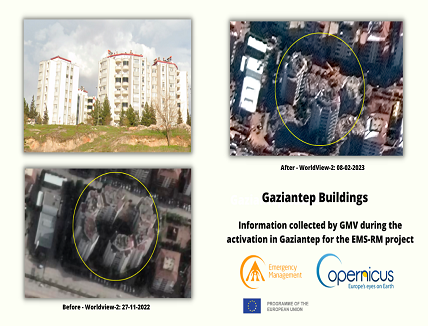
As part of its emergency management efforts, GMV is conducting an impact assessment of the earthquake that struck Turkey and Syria in the early hours of Monday, February 6. It is already considered the deadliest earthquake in the last 10 years, with a death toll of 33,000 so far.
GMV is using optical imagery of the highest resolution to keep the EU Civil Protection Mechanism’s Emergency Response Coordination Centre (ERCC) apprised of the situation facing the population and infrastructure in several affected cities (Gaziantep, İslahiye, Düziçi and Bahçe).
GMV is assessing how the population and infrastructure have been affected by one of the largest quakes in the last decade, compiling all information from high-resolution satellite imagery. These images show the challenge faced by rescue teams and reveal the widespread destruction caused in towns and villages across the region. Completely flattened residential areas, makeshift tents set up on soccer fields, and heavy traffic jams on roads, many of which are closed, are some examples of what they have captured.
This action is being done thanks to the Copernicus program, which keeps satellites and Earth observation services operational to support management and decision-making in different areas, particularly in the field of emergency management. António Araújo, head of security and emergencies at GMV’s Remote Sensing and Geospatial Services Division, said: “GMV is part of the team that is on standby 24/7 to respond to crises like the one we are experiencing now and to inform search and rescue teams, as well as decision-makers and other stakeholders, of the situation on the ground.”
From a more global point of view, the Copernicus program is working to deliver an autonomous Earth observation system through a network of satellites, a network of ground-based measurement stations, and airborne instruments, as well as generating information services. The aim is to observe the planet from all possible angles, in order to gain a deeper understanding of the changes taking place on Earth and how they impact our lives.
GMV is one of the main suppliers of Copernicus program infrastructure. In a management capacity, it monitors the database architecture and ensures its integrity, analyzes the data required by the service chains, and identifies the most suitable technologies to keep the entire program operational.
For more information: https://emergency.copernicus.eu/mapping/list-of-components/EMSR648


















